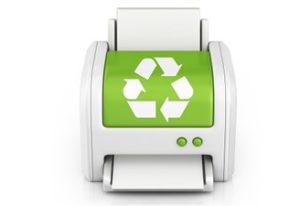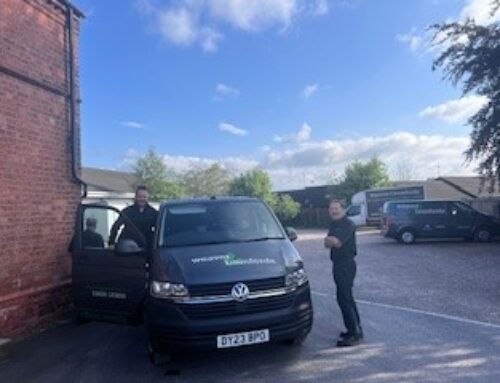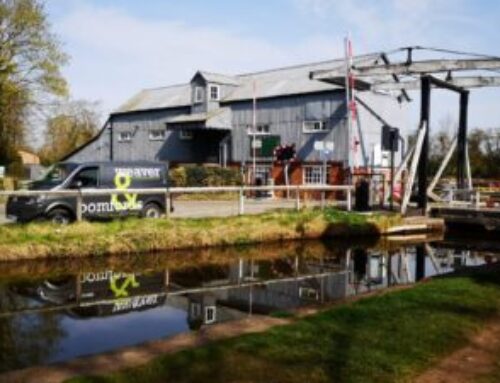Greener Printing
Businesses produce 40% of the UK’s carbon emissions, compared with 27% for households. Electricity consumed by office equipment in the UK already costs £300 million each year (Carbon Trust) and that figure is rapidly increasing, particularly with the continuing rise in energy prices.
There’s no getting away from the fact that printing and copying can leave a significant carbon footprint. A ream of paper might cost you less than a couple of pounds but much of the paper sold in the UK is imported, from as far away as Australia and Brazil. Add to that the amount of plastic toner containers, consumables and parts required to keep your machine working, the energy used by all the devices in your office (that no-one ever turns off), the disposable nature of many printers (it’s cheaper to buy a new one than get the old one repaired) and you’re looking at your very own office environmental disaster!
There are simple steps you can take to reduce your consumption and make your print network more environmentally friendly and cost-effective.
Simple Savings
Switch it off. Leave an MFP on overnight and enough energy is used for over 5,000 A4 copies. Switch off equipment at the end of every day. Enable printer standby mode and print in batches to allow the machine to spend more time in standby than idle. Newer machines start up faster, so employees are more likely to be happy about turning them off. Install a plug-in seven-day timer to reduce the likelihood of machines being left on out of hours.
Keep it cool. In an air conditioned office it can take half as much energy again to remove the heat generated by office equipment as it takes to run the equipment in the first place. Remove as many machines as possible and use naturally ventilated areas to locate your MFD. This will help avoid the air conditioning having to compensate for the associated heat gains.
Buy energy efficient products. Look for new generation devices that are Blue Angel and Energy Star compliant.
Make sure unwanted equipment goes to a good home. The Waste Electronic and Electrical Equipment (WEEE) directive means that any old electronic equipment needs to be disposed of in accordance with its guidelines. Any company not conforming to these standards could be in for a hefty fine.
Document Solutions
Is the answer simply not to print? The paperless office has long been discussed, however printed documents are still an integral part of many businesses. In fact, the average office worker in the UK uses 10,000 sheets of paper each year, 6,800 of which are thrown away.
Of course things will always need to be printed, but sometimes this is done with little thought for the environment (not to mention company costs). That’s where one of our clever Document Solutions could help. User authentication is a great first step. Make individual users accountable for their own printing volumes and it can work wonders. There are lots of easy ways to authenticate, from a simple PIN number to a proximity card or key fob or even a fingerprint and once you know who’s printing, you can take steps to address the issues. A combination of direct user controls (default to mono and duplex), gentle reminders to make better choices and the ability to delete incorrect documents and prevent documents from lying uncollected on the printer will all significantly reduce waste.
Create an easily accessible digital archive from where documents can be quickly recalled and shared (subject to permissions) and you’ll reduce print volumes. Scanning and archiving Solutions have developed hugely over the last few years and there are now affordable easy to use versions that are easy to incorporate into typical workflows with minimal disruption. Our Document Experts will help you to assess how such a Solution can fit in to your business and help you choose the one that’s right for you.
Use a Managed Print Service
Reduce the number of devices you have. A simple Print Audit will identify any that are underutilised – printers are often there for individual convenience rather than as part of a properly designed network. Don’t have large numbers of MFPs and printers all consuming energy, toner and consumables, instead replace them with fewer more energy efficient devices. You’ll cut down on waste, reduce volumes and significantly reduce energy consumption.
Toner and consumables are only despatched when required by the individual device and so a Managed Print Service cuts down on wasted toner cartridges. There’s no need to hold stock, which runs the risk of being lost or becoming obsolete when devices break down or are replaced. We measure print output against the supplies used which highlights any performance inefficiencies.
Our Managed Print Service provides a planned maintenance schedule using OEM parts, extending the life of your device and resulting in fewer service calls. Remote monitoring provides accurate Management Information used to pre-empt service calls and toner deliveries, reducing the road miles. Finally, if your device is correctly maintained it can usually be traded in and be used again, even if you decide to upgrade.
Toner Recycling
Almost every office uses toner cartridges and with 375 million empty cartridges thrown away each year, recycling has never been so important. Many toner cartridges unfortunately find their way into incinerators or landfill sites and considering most are made out of polymer, the effect on the environment could last up to 1,000 years due to the decomposition rate.
Here at Weaver & Bomfords we offer a toner recycling service which is simple and easy to use. We provide a collection box which is left with you until it’s full (it can hold approximately 20 MFP cartridges) and we will then take it away for recycling. Yes, it’s that easy!
Weaver & Bomfords can manage all your printing devices including MFDs and printers, scanners and wide format devices. Your business will improve productivity, minimise downtime, save time and reduce its costs and environmental footprint all for a low fixed cost per page. Why not get in touch with one of our Document Experts?





